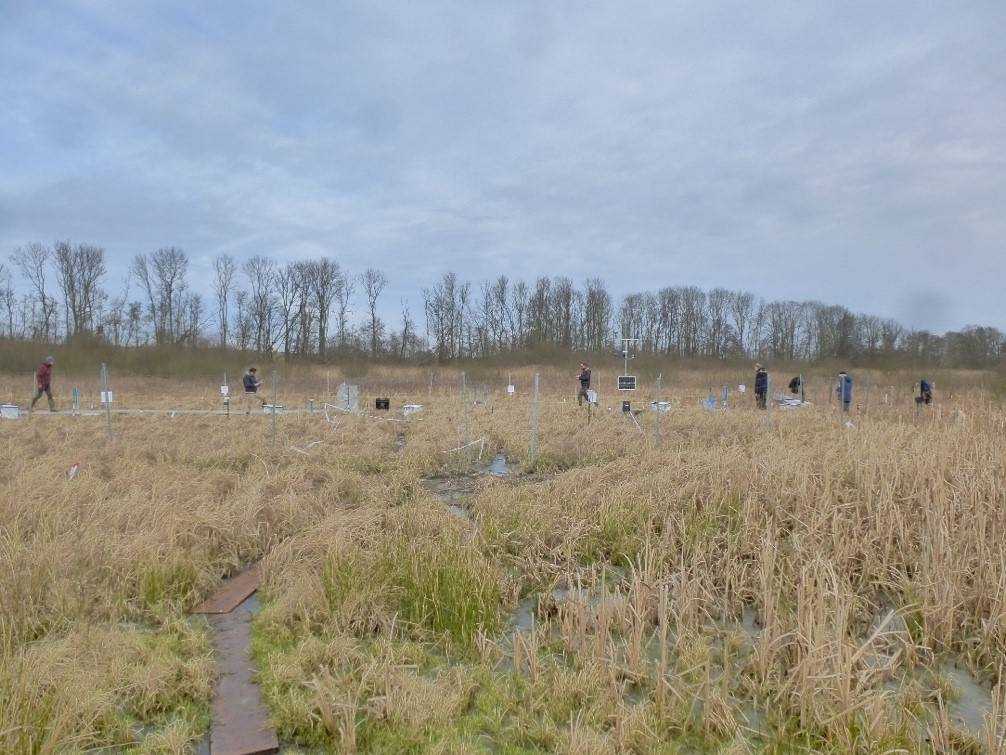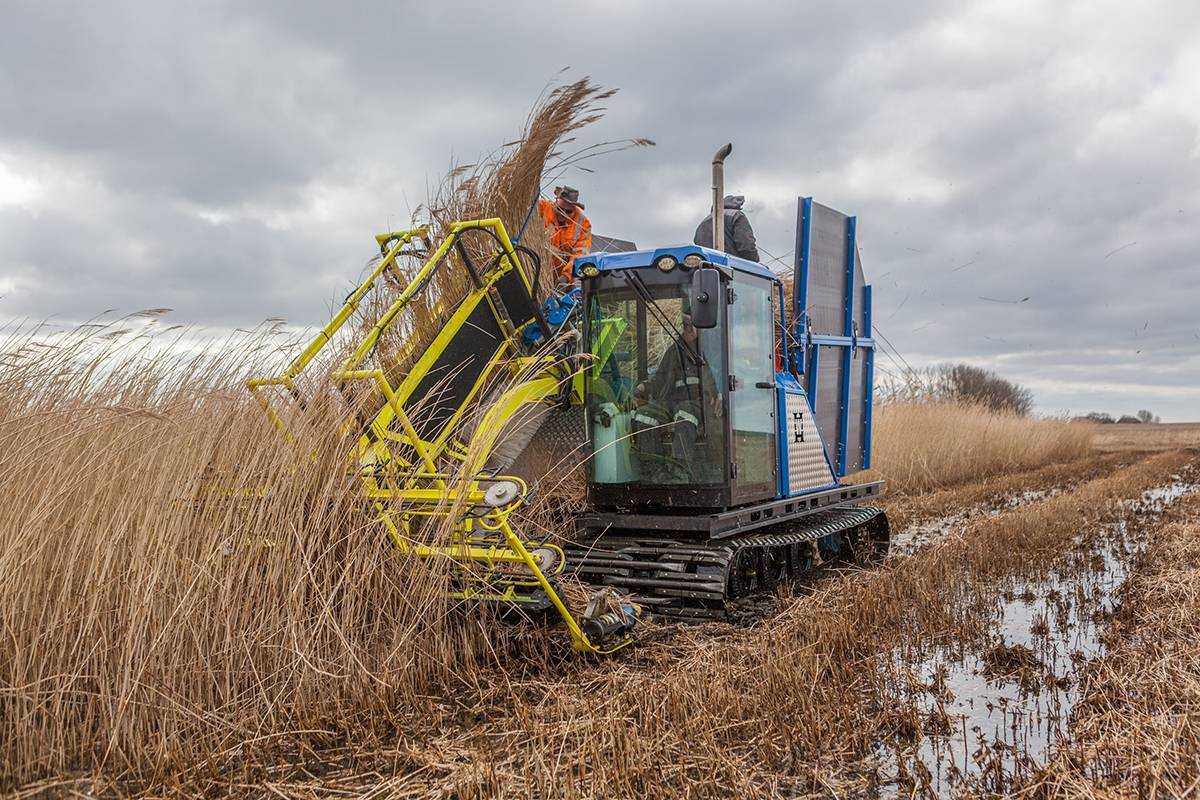[ad_1]
Agricultural and environmental science experts Bernd Lennartz, Franziska Tanneberger and Nicole Wrage-Mönnig discuss the complex effects of peat soils on climate
In the federal state of northern Germany, Mecklenburg-Vorpommern, peatlands are the primary source of greenhouse gas emissions. In the discussion of reducing emissions from traffic and industry, it is easy to forget that organic soils (peat soils) could be far more important in the emission of greenhouse gases than other sources. 13% of the land area of ​​Mecklenburg-Western Pomerania is covered with peat bogs. As elsewhere in the world, these precious ecosystems have been artificially drained for agricultural purposes and the soil has therefore been converted from a carbon sink to a carbon source.
Today, the drained peatlands of Mecklenburg-Vorpommern emit much more carbon dioxide (CO2) than the entire sequestering forest area per year.
Lowering the water table in peatlands causes aeration of the soil. Organic matter that has accumulated under reducing conditions (absence of oxygen) over thousands of years oxidizes and is ultimately converted to CO2. In this sense, the drainage of a peatland is similar to the combustion of oil or fossil gas. Besides CO2, a bunch of other compounds such as N2O, which has a considerably stronger warming effect than CO2, can be released as a result of drainage. The process of mineralization of organic matter is called degradation and is accompanied by subsidence, over longer periods or in warmer climates, of several meters. Peat degradation continues as long as the water table is low and a once virgin peat moss with almost 100% organic matter turns into mineral soil with less than 30% organic matter.
Peat soils are more than carbon storage and it is too simplistic to narrow the debate to greenhouse gas emissions. Peat soils are also distinguished by their physical properties. They have extremely high porosity and are therefore predestined to store water. The architecture of the pores changes dramatically during drainage in the early stages. Although the total porosity of peat soils remains high with degradation compared to mineral soils, important functions such as hydraulic conductivity are reduced, which, for example, can have important consequences on landscape connectivity. The overall role of peatlands in the landscape in terms of water supply and purification is therefore also changed with drainage. Peatland drainage simply means less clean water in our landscapes.

WETSCAPES project
Rewetting of drained and degraded peat soils has been identified as a management option to reduce greenhouse gas emissions as well as other related benefits. During the early stages of the research, some scientists drew attention to the fact that re-humidification potentially makes matters worse by increasing the release of greenhouse gas methane to flooded sites. Today we know better and have learned that when rewetting peat soils, attention to detail is required and the water tables can be adjusted for optimal climate impact. Moreover, in terms of climate effect, the continued release of long-term accumulated CO2 from drained peatlands is much worse than the release of short-lived greenhouse gas methane, and a choice must be made between them. of them. Even over short periods (in geological terms) of a decade or two, peat soils are again not only a sink for carbon and greenhouse gases, but also a key player in the water cycle. a landscape. The multi-institutional and interdisciplinary research project WETSCAPES is helping to understand these processes in fen peatlands, the most common type of peatland in the temperate zone.
The conversion process does not necessarily mean that agriculture or forestry should be abandoned on rewetted peatlands. New farming systems, called malaria farming, allow the positive effects of re-humidification to be combined with the production of biomass. Promising projects underway demonstrate that the cultivation of, for example, sphagnum moss to replace peat in horticulture, reed and cattail to produce building materials (e.g. insulation) and sedges to produce energy actually works. Malaria protects the peaty soil, new peat builds up and farmers can produce (new) agricultural products in a sustainable and climate-smart way.
From a societal perspective, we need to decide which peat soil management is most beneficial for us as humans and for the globe. This debate must weigh ecosystem functions and services such as food / energy production, climate protection as well as quantitative and qualitative functions in the water cycle. If greenhouse gases such as CO2, N2O and methane were poison green and horribly smelly, the speech would have been decided long ago. Imagine our (beautiful) landscapes drowned in a green and nauseating haze… The discussion is not whether we will have productive agriculture or a nature reserve for the conservation of biodiversity. Malaria farming is a third avenue, which has the potential to stimulate regional value-added chains, including the creation of new industries while providing various ecosystem services, including biodiversity typical of wet peatlands. The transition from a research phase to the rewetting and large-scale reconversion of degraded peatlands must be paved by policies which, in the case of Europe, fall in particular to the European Union and its common agricultural policy. , currently reformed. . It is time to bring degraded peatlands further into the global debate on climate change.
Recent studies by the WETSCAPES consortium on the impact of re-humidification on greenhouse gas emissions, peat degradation and N2O emissions as good as rewetting strategies and policy implications are available.
You will find details on the WETSCAPES project and additional publications here. The Greifswald Mire Center offers valuable information on peatlands and malaria farming.
Note: this is a commercial profile
From the publisher advised Articles
[ad_2]




